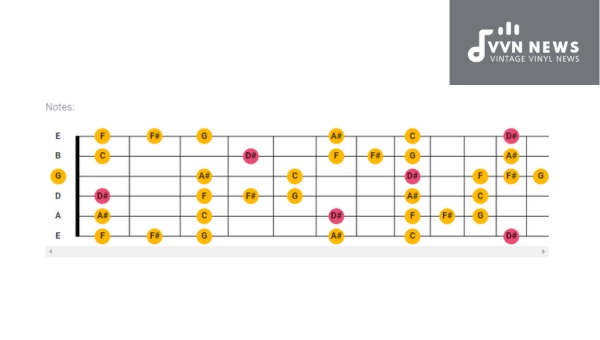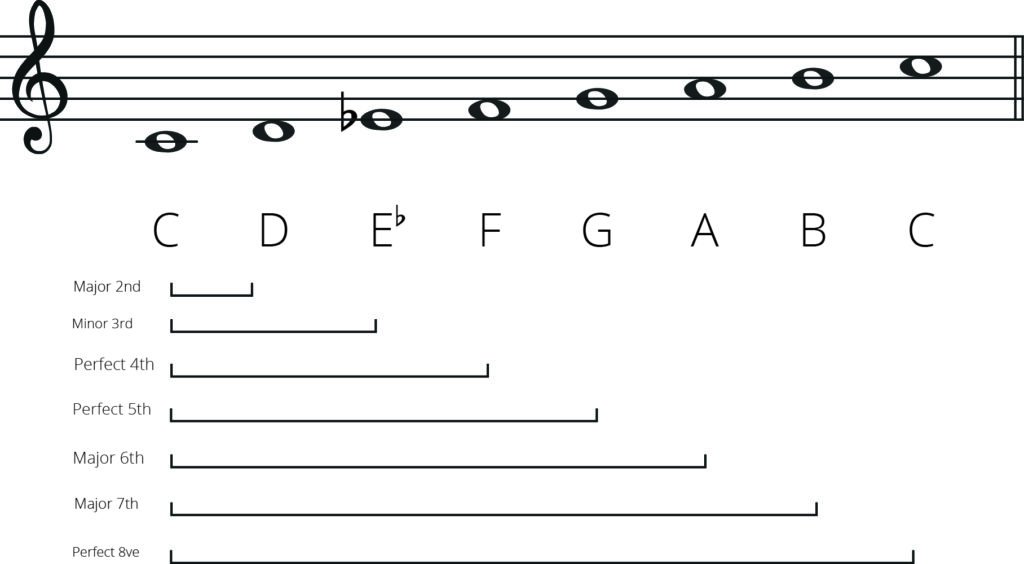Imagine a world where music theory is a fantastical journey filled with twists, turns, and unexpected surprises. In this whimsical realm, scales are the secret passageways that lead us from one magical sound to the next. Today, we embark on an adventure through the mysterious world of scales, from the playful pentatonic scale to the enigmatic melodic minor scale. Buckle up, fellow music explorers, as we dive headfirst into the wild and wonderful realm of diverse scales!
Contents
- 1
- 2 2. Navigating the Complex Landscape of the Melodic Minor Scale
- 3 3. Comparative Analysis: Pentatonic Versus Melodic Minor Scales
- 4 4. Practical Implementations of the Pentatonic Scale in Contemporary Music
- 5 5. Unleashing the Expressive Power of the Melodic Minor Scale
- 6 6. Bridging the Gap: Integrating Pentatonic and Melodic Minor Scales in Composition
- 7 FAQs
- 8 Time to Get Your Scale on!
essence-and-origins-of-the-pentatonic-scale”>1. The Essence and Origins of the Pentatonic Scale
Ever wonder where the pentatonic scale came from? Well, hold onto your hats, because we’re about to embark on a musical journey through time and space to discover its essence and origins! Picture it: a group of cave people banging rocks together in perfect harmony, creating the very first pentatonic scale. Okay, maybe that’s a bit of an exaggeration, but you get the idea.
Legend has it that the pentatonic scale dates back thousands of years, with roots in ancient civilizations like Mesopotamia and China. It’s been passed down through generations, evolving and shaping the sound of music as we know it today. From the haunting melodies of Chinese folk songs to the bluesy riffs of American rock ’n’ roll, the pentatonic scale has left its mark on virtually every genre.
What makes the pentatonic scale so special, you ask? Well, for starters, it’s only made up of five notes, giving it a simplistic yet versatile quality that sets it apart from other scales. This limited number of notes allows for endless combinations and variations, making it a favorite among musicians and composers alike. Plus, its pentatonic magic can instantly elevate any melody, adding an exotic flair that’s impossible to resist.
So next time you find yourself humming along to a catchy tune, take a moment to appreciate . It’s a musical treasure that has stood the test of time, enchanting listeners and performers across the globe. Who knew that five little notes could hold so much power and beauty? Hats off to the pentatonic scale – may it continue to inspire and captivate for centuries to come!

So you want to dive into the world of the melodic minor scale, huh? Buckle up, because it’s a wild ride! This scale is like the rebellious teenager of the music world – it follows its own rules and doesn’t play nice with others. But don’t worry, we’ll help you navigate the tangled mess of notes and intervals like a seasoned explorer.
First things first, let’s talk about the funky little pattern that makes up the melodic minor scale. It’s like a secret code that only the cool kids know – a mix of major and minor tones that’ll have your ears doing a double take. Remember, in the melodic minor scale, the sixth and seventh degrees are raised when ascending, but revert back to the natural minor scale when descending. It’s like a musical rollercoaster – one minute you’re soaring to new heights, and the next you’re plummeting back to reality.
As you navigate the twists and turns of the melodic minor scale, don’t forget to experiment with different melodic patterns and chord progressions. Mix things up, break the rules, and see where the music takes you. Who knows, you might stumble upon a hidden gem or create a killer riff that’ll have everyone grooving. The melodic minor scale is your playground – play, explore, and most importantly, have fun!

3. Comparative Analysis: Pentatonic Versus Melodic Minor Scales
When it comes to comparing the Pentatonic and Melodic Minor scales, it’s like pitting two fierce competitors against each other in a musical showdown. Let’s break down the differences between these two scales and see which one comes out on top!
Pentatonic Scale:
- Only five notes in the scale, making it simple and easy to use.
- Loved by rock and blues musicians for its versatility and ease of improvisation.
- Known for its “happy” sound, making it a go-to choice for creating uplifting melodies.
Melodic Minor Scale:
- Seven notes in the scale, adding complexity and depth to your compositions.
- Used in jazz and classical music for its rich and exotic sound.
- Known for its ability to create tension and drama in musical passages, perfect for adding a touch of mystery to your music.
So, which scale is the winner in this musical battle? Well, it ultimately depends on your personal preference and the style of music you’re playing. Both the Pentatonic and Melodic Minor scales have their own unique strengths and can be used to create beautiful melodies and harmonies. Why not try experimenting with both and see which one resonates with your musical soul?

4. Practical Implementations of the Pentatonic Scale in Contemporary Music
So, you want to incorporate the oh-so-magical pentatonic scale into your modern tunes? Look no further, my fellow music enthusiasts, for I am about to drop some knowledge bombs on you!
First things first, let’s talk about using the pentatonic scale in creating catchy melodies. Imagine a world where every note you play resonates with your audience on a deep, soulful level. That’s the power of the pentatonic scale, my friends. So, go ahead and sprinkle those pentatonic notes all over your melody like a musical fairy dust!
Next up, let’s chat about using the pentatonic scale in crafting killer guitar solos. Picture this: You’re shredding away on your electric guitar, and suddenly you bust out a jaw-dropping pentatonic solo that leaves everyone in the room speechless. It’s like magic, but with more distortion and power chords!
And finally, don’t forget to experiment with different pentatonic variations to spice up your compositions. Mix and match major and minor pentatonic scales, throw in some chromatic notes for that extra oomph, and watch your music transform into a sonic masterpiece that will have listeners begging for more!

5. Unleashing the Expressive Power of the Melodic Minor Scale
So you’ve learned your basic scales – major, minor, pentatonic – and have been rocking out on your guitar or piano like a boss. But have you ever felt like your musical arsenal is missing a little something? Well, fear not, because I’m here to introduce you to the underrated hero of scales: the melodic minor.
What sets the melodic minor apart from its more popular counterparts is its unique blend of sweetness and spice. It’s like the musical equivalent of a flaming dessert – surprising, exciting, and oh so satisfying. So why settle for vanilla when you can have tutti-frutti with a side of jalapeno?
With the melodic minor scale, you can effortlessly transition from melancholic beauty to fiery intensity with just a few notes. It’s like having a secret musical weapon up your sleeve, ready to unleash at a moment’s notice. So go ahead, let your creativity run wild and see where the melodic minor takes you. The possibilities are endless!
6. Bridging the Gap: Integrating Pentatonic and Melodic Minor Scales in Composition
So you’ve mastered the pentatonic scale and dabbled in the melodic minor scale, but have you ever thought about integrating the two in your compositions? It’s like mixing chocolate and peanut butter – a winning combination that is sure to take your music to the next level!
Here are a few tips to help you bridge the gap between these two scales and create some killer tunes:
- Experiment with incorporating melodic minor notes into your pentatonic licks for added flavor and tension.
- Try blending the two scales together by alternating between pentatonic and melodic minor patterns within the same musical phrase. This will keep your listeners on their toes and add some unpredictability to your compositions.
- Don’t be afraid to break the rules and think outside the box – mix and match different intervals from each scale to create unique and memorable melodies.
By combining the simplicity of the pentatonic scale with the richness of the melodic minor scale, you can create compositions that are both catchy and complex. So go ahead, experiment, play around, and see where this musical fusion takes you!
FAQs
What exactly are pentatonic scales and melodic minor scales?
Pentatonic scales are like a picky eater’s dream – they only have five notes, skipping the less tasty ones. Melodic minor scales, on the other hand, are like a musical buffet – they have all the notes, and a little extra spice.
How do pentatonic scales differ from melodic minor scales?
Think of pentatonic scales as the lazy cousin who only plays five notes, sticking to the basics. Melodic minor scales, on the other hand, are the adventurous aunt who adds a few extra notes for that unexpected twist.
Why should I explore different scales, from pentatonic to melodic minor?
Well, do you want to play it safe with the same old pentatonic scales, or do you want to spice up your playing with the flavorful melodic minor scales? Variety is the spice of life, my friend.
How can I incorporate pentatonic and melodic minor scales into my playing?
It’s as simple as adding a pinch of pentatonic here, a dash of melodic minor there. Mix it up, experiment, and before you know it, you’ll have a musical masterpiece on your hands.
Are there any tips for mastering these diverse scales?
Practice makes perfect, my dear musician. Start slow, gradually increase the tempo, and soon enough, you’ll be weaving in and out of pentatonic and melodic minor scales like a musical magician.
Time to Get Your Scale on!
Well there you have it folks, from the mighty pentatonic to the mysterious melodic minor, we’ve explored a whole range of scales that will have you shredding like a pro in no time! So grab your guitar, sit down at the piano, or pick up that flute (if you’re feeling fancy) and start practicing these diverse scales. Who knows, maybe you’ll be the next musical prodigy to grace the stage with your killer solos. Keep on jamming, and remember - practice makes perfect, but a little bit of creativity never hurt anyone!



